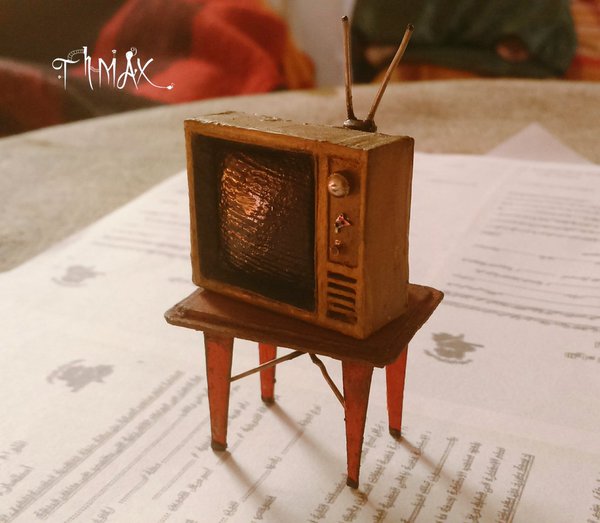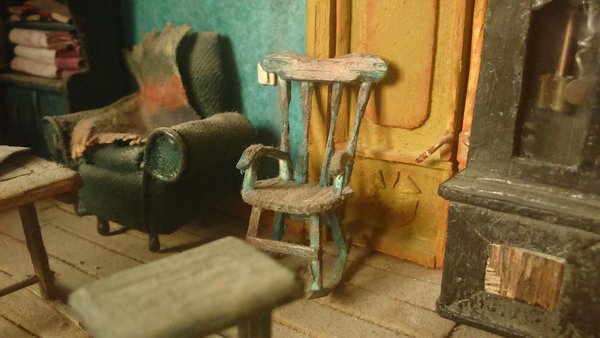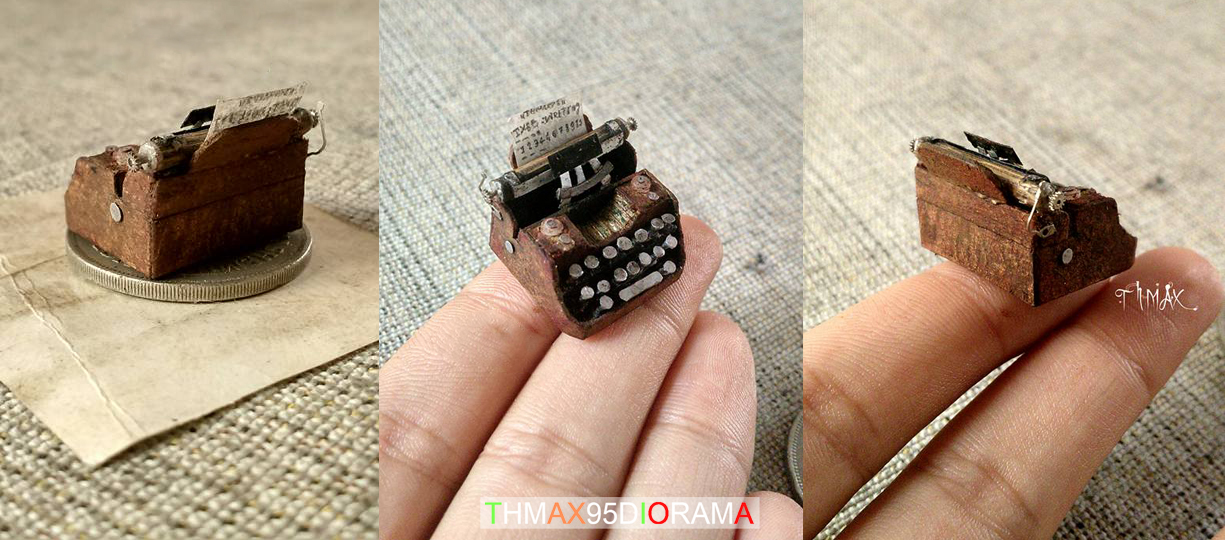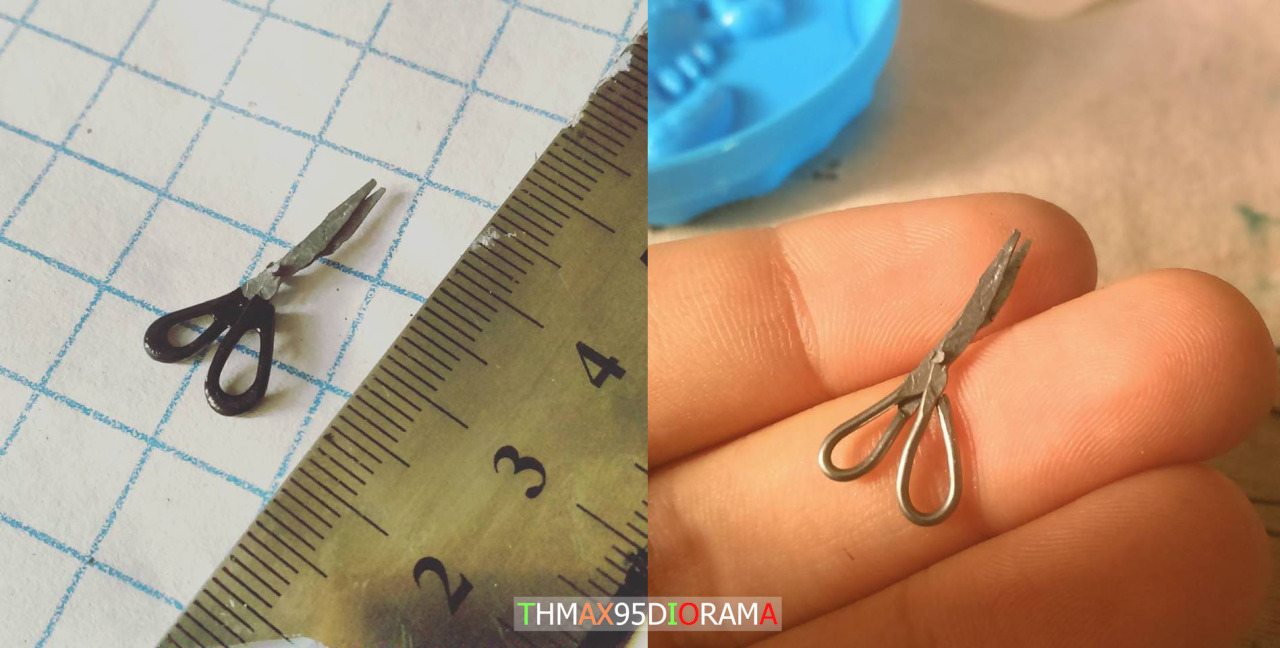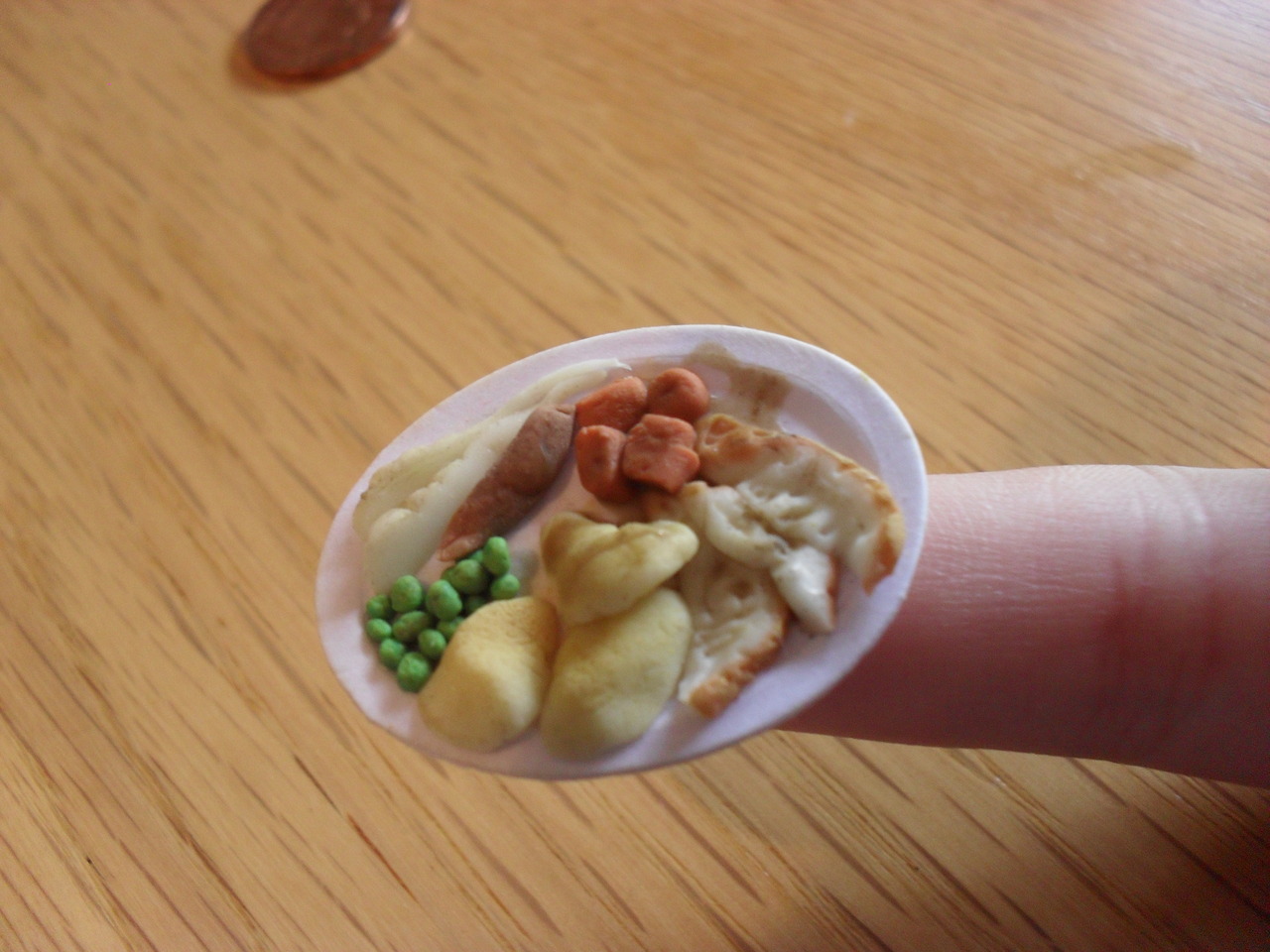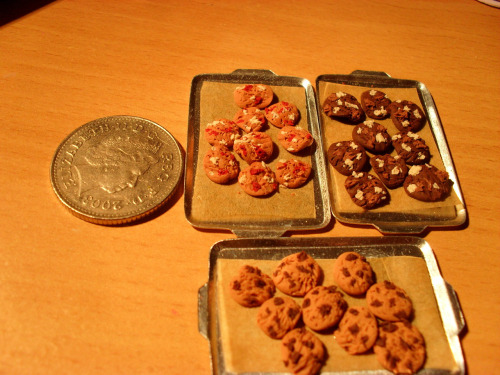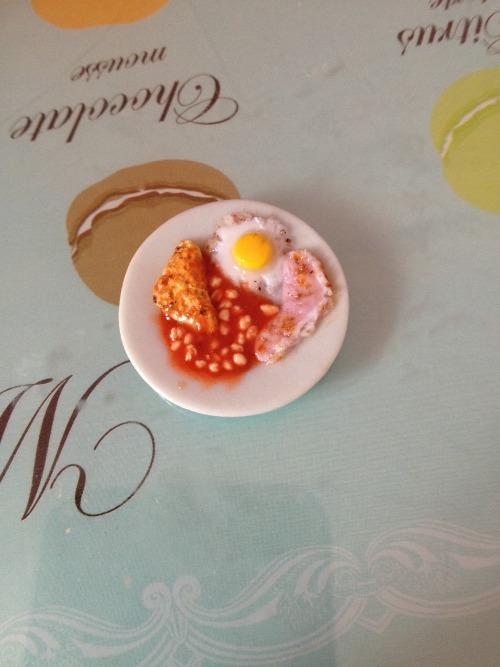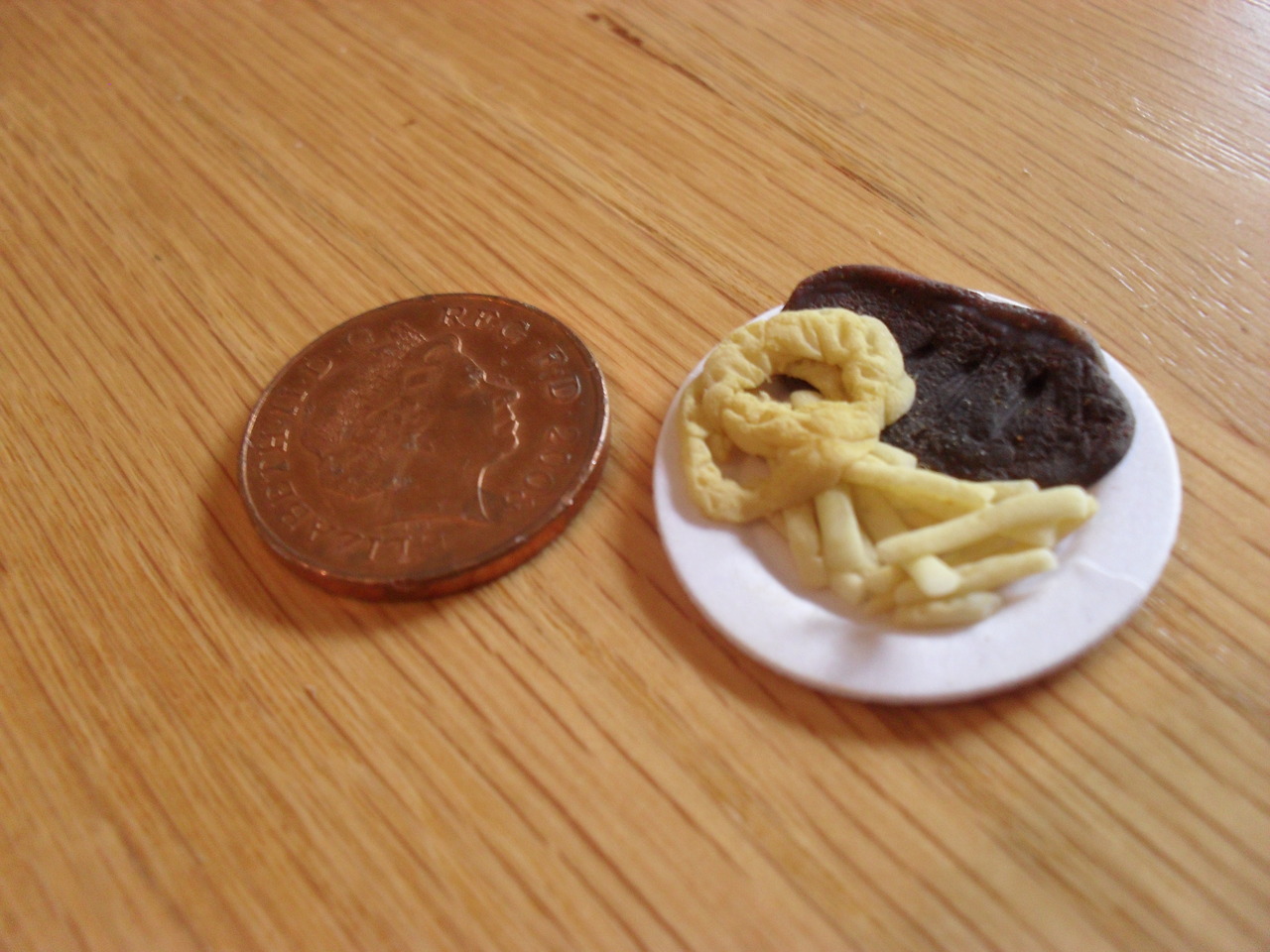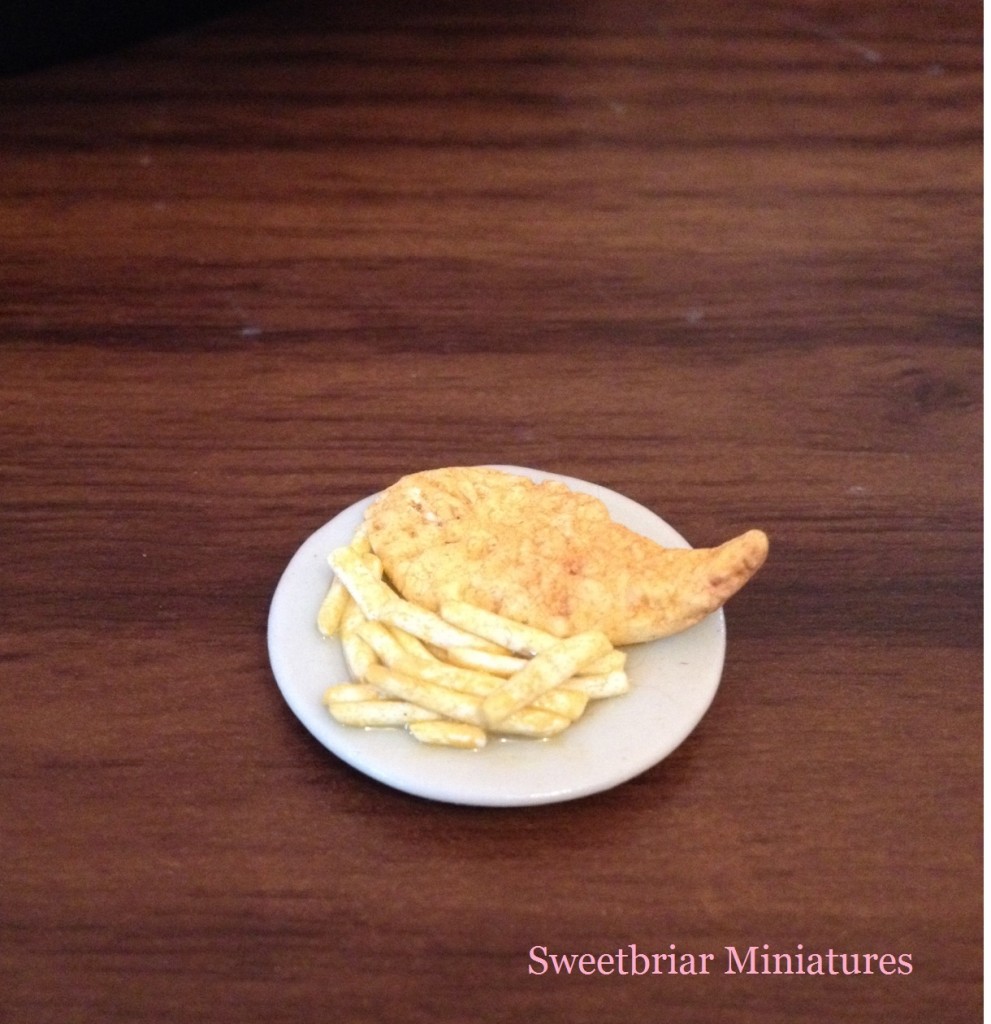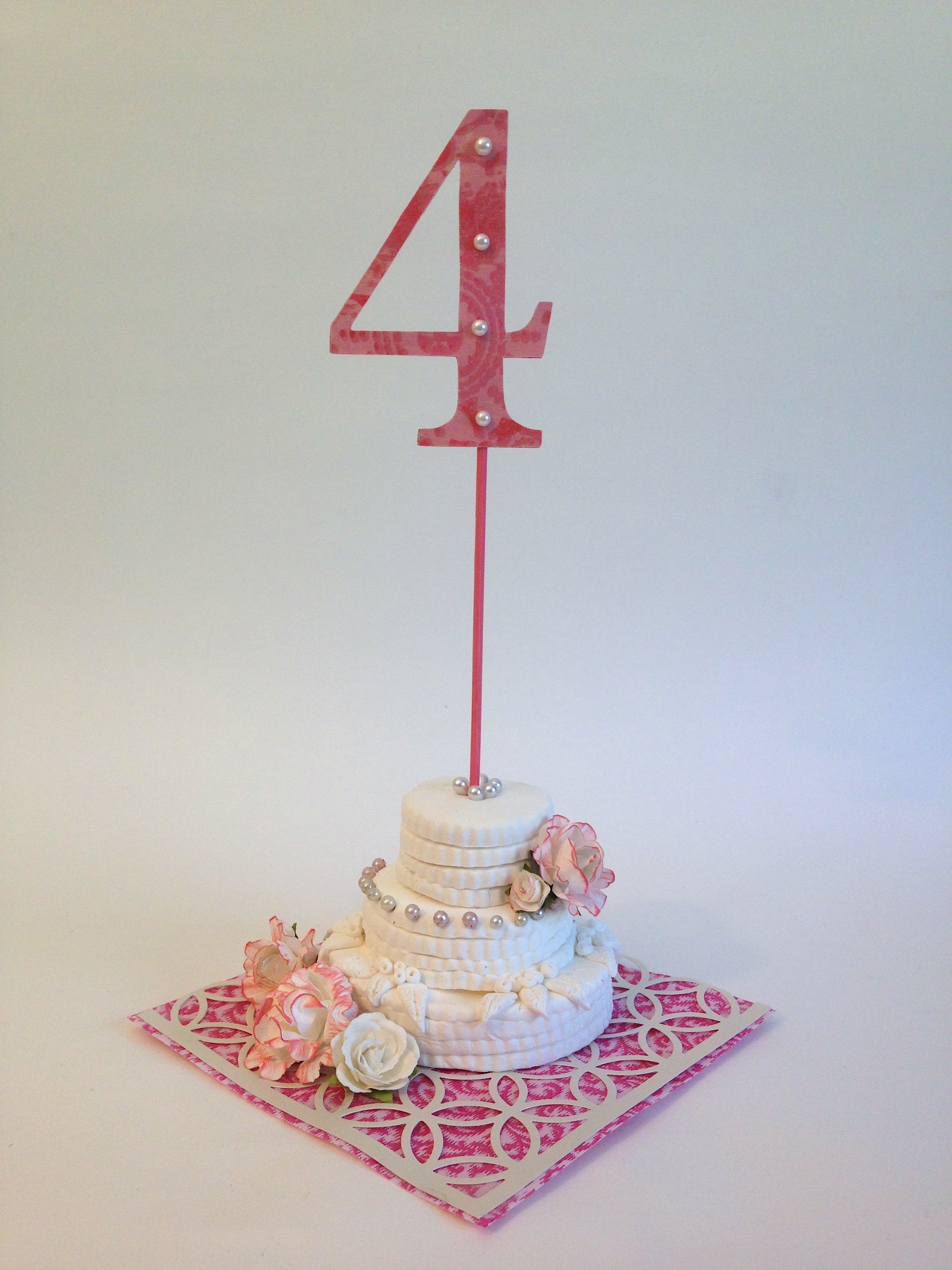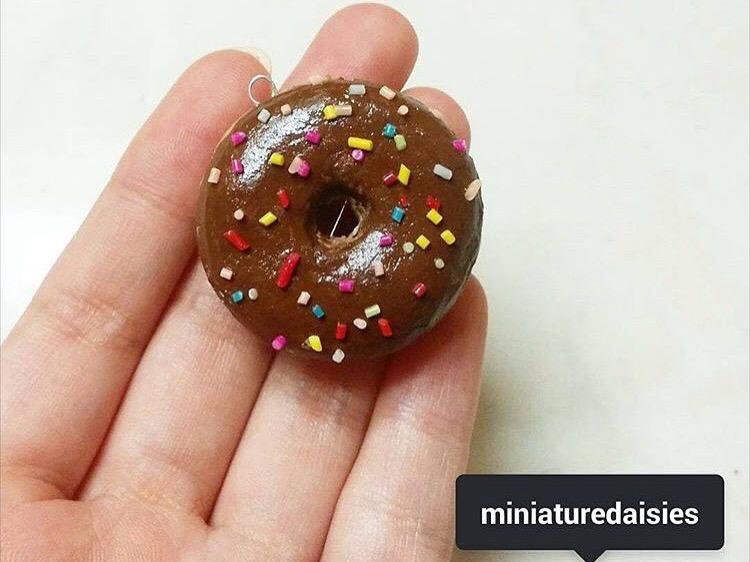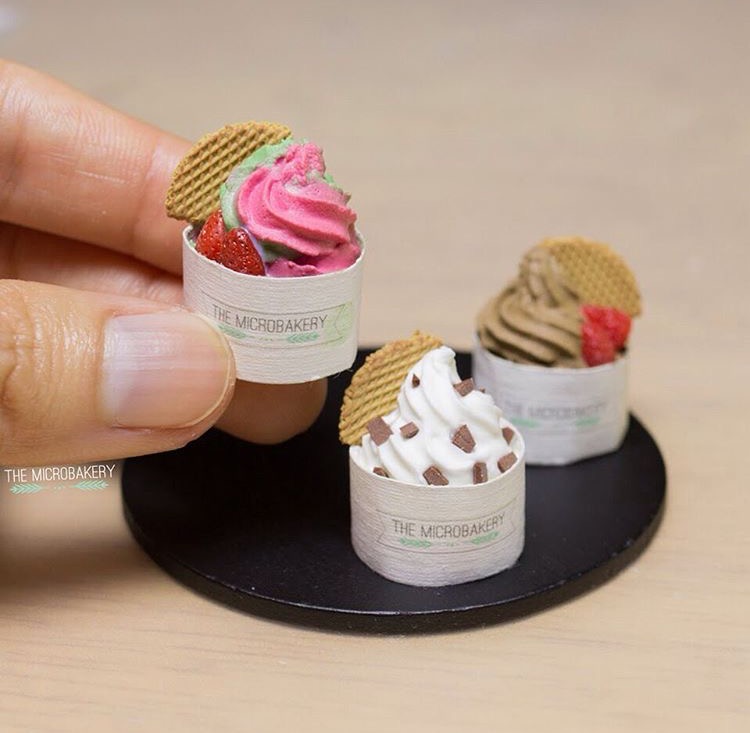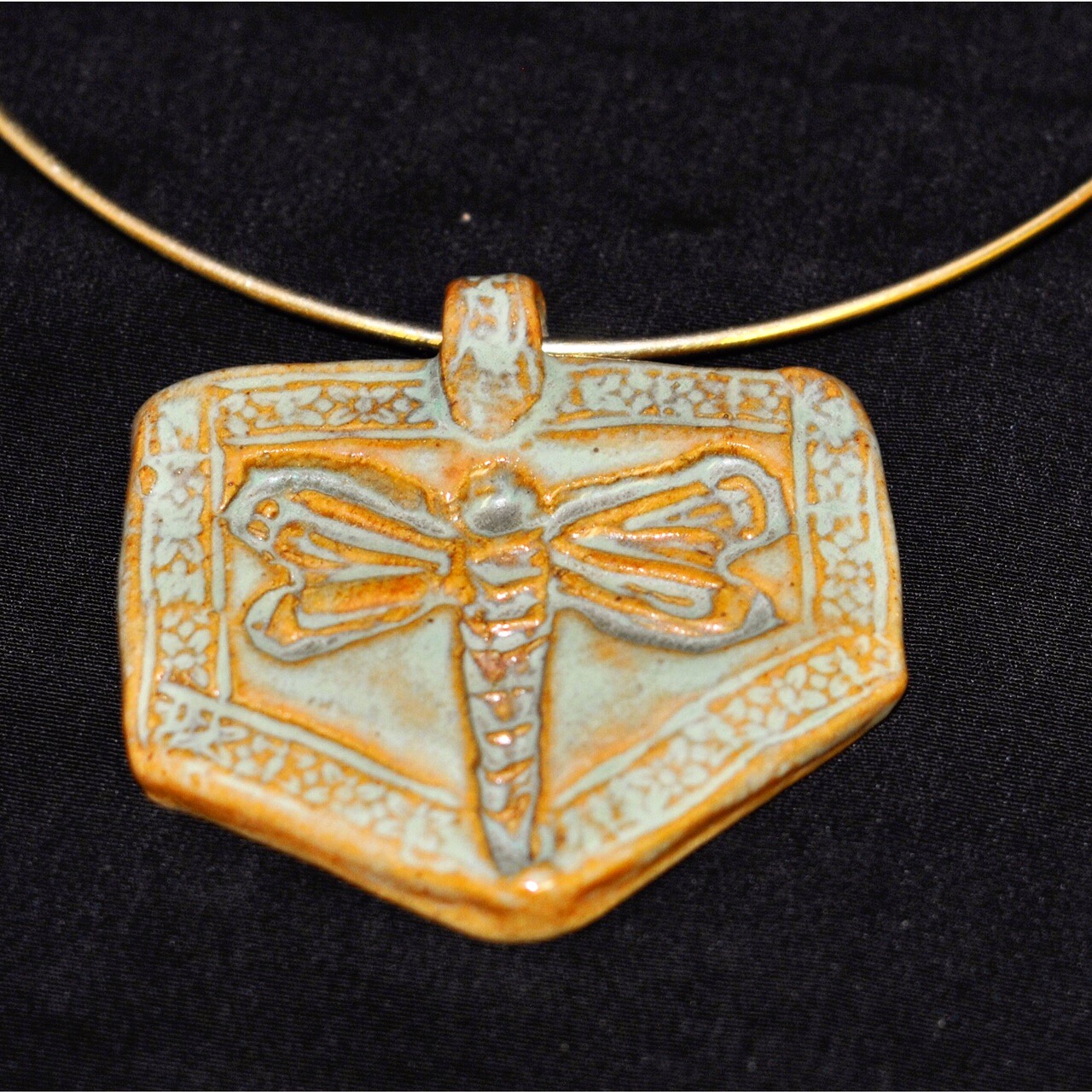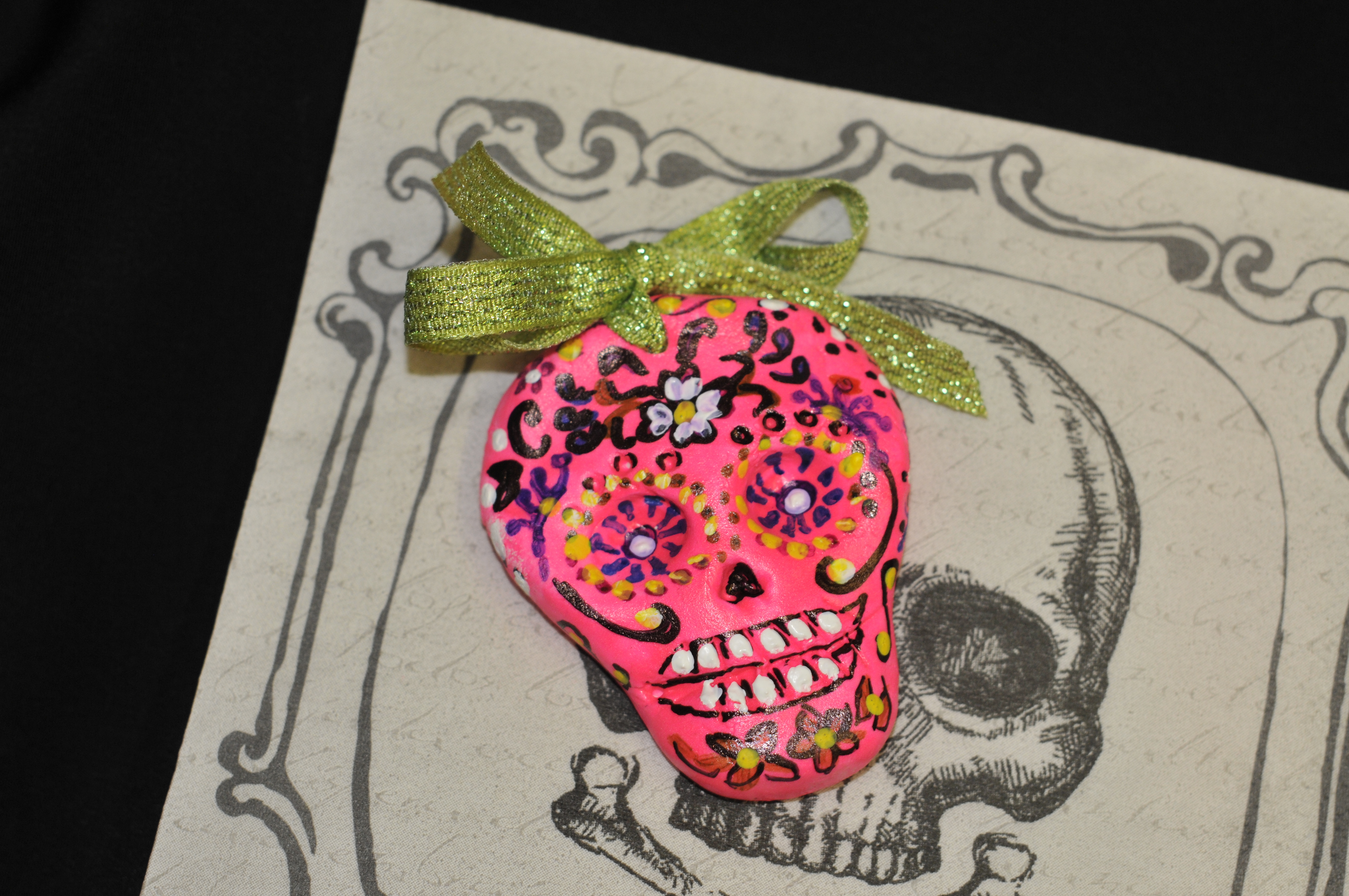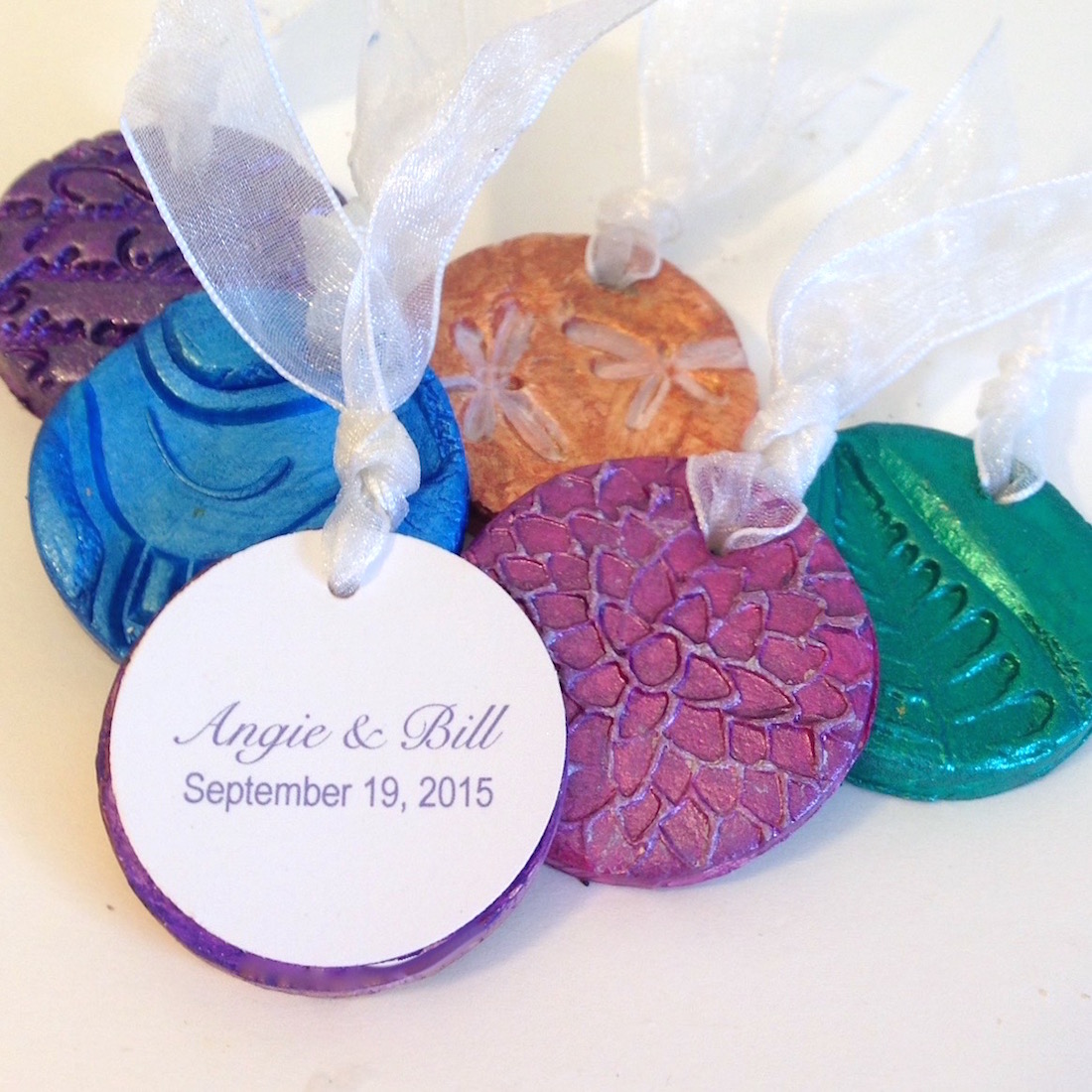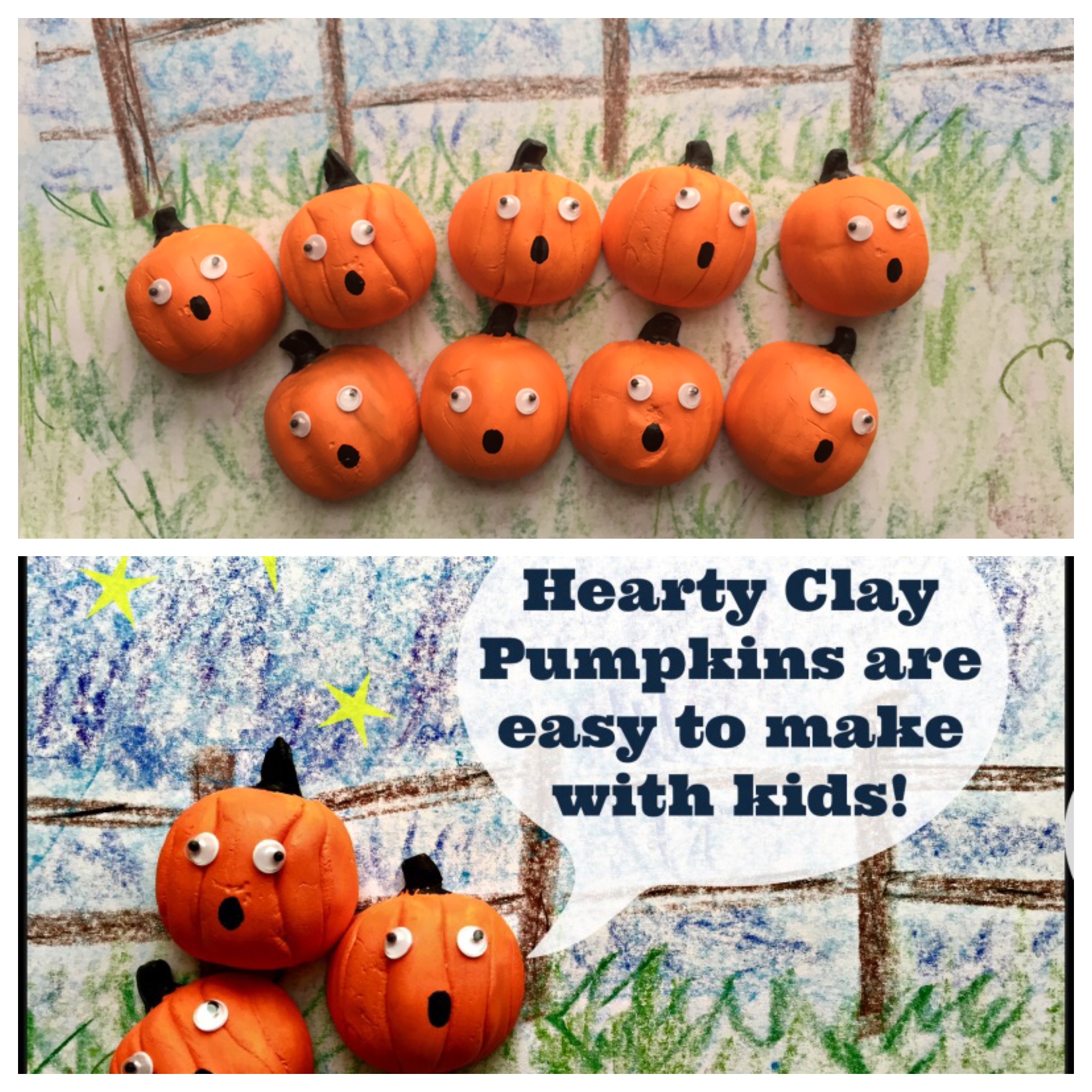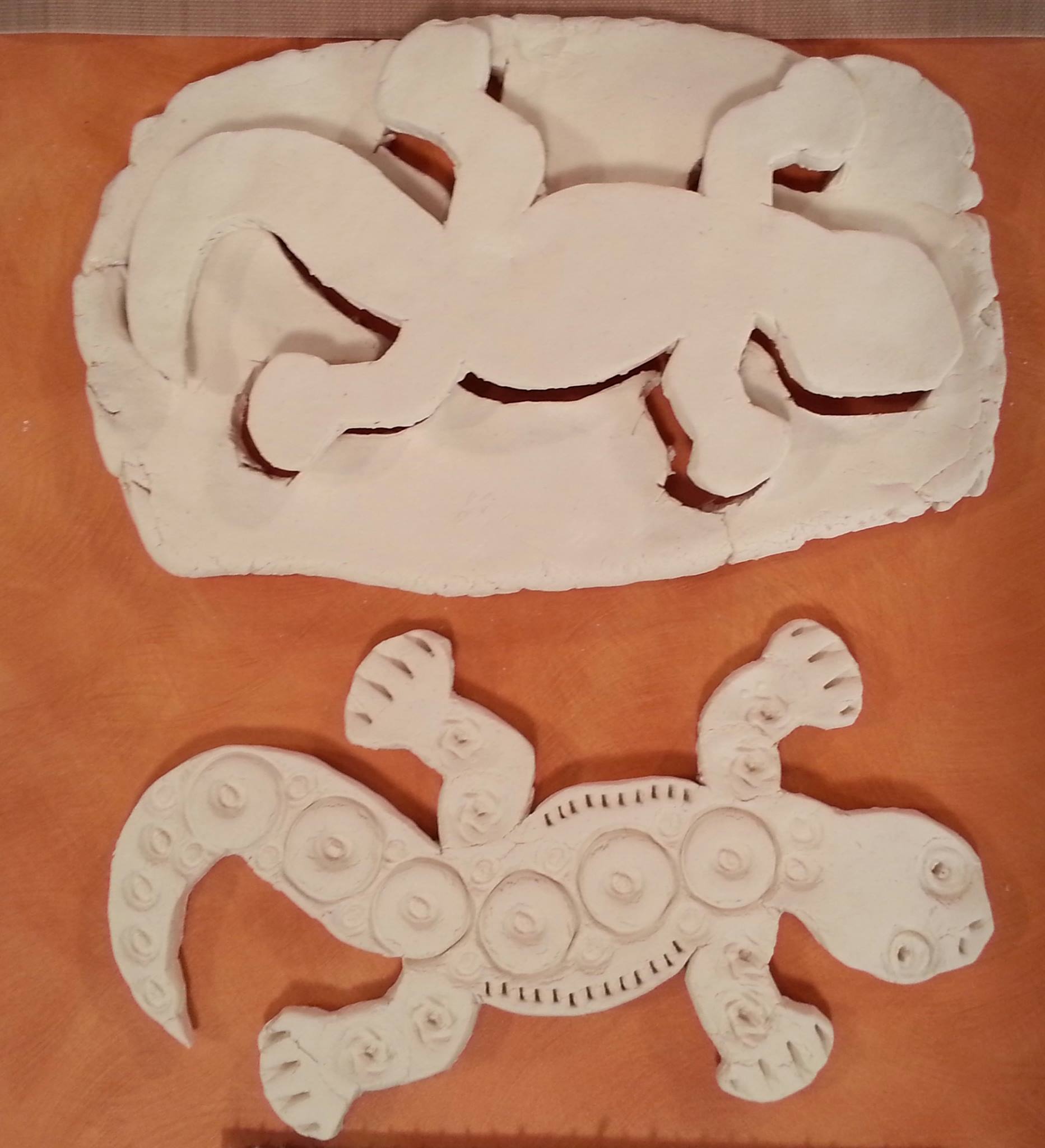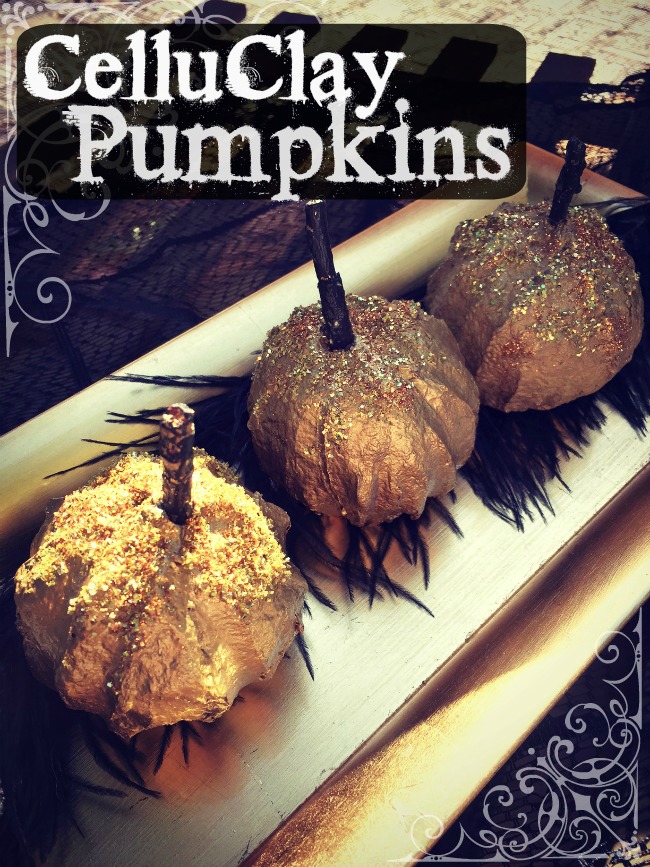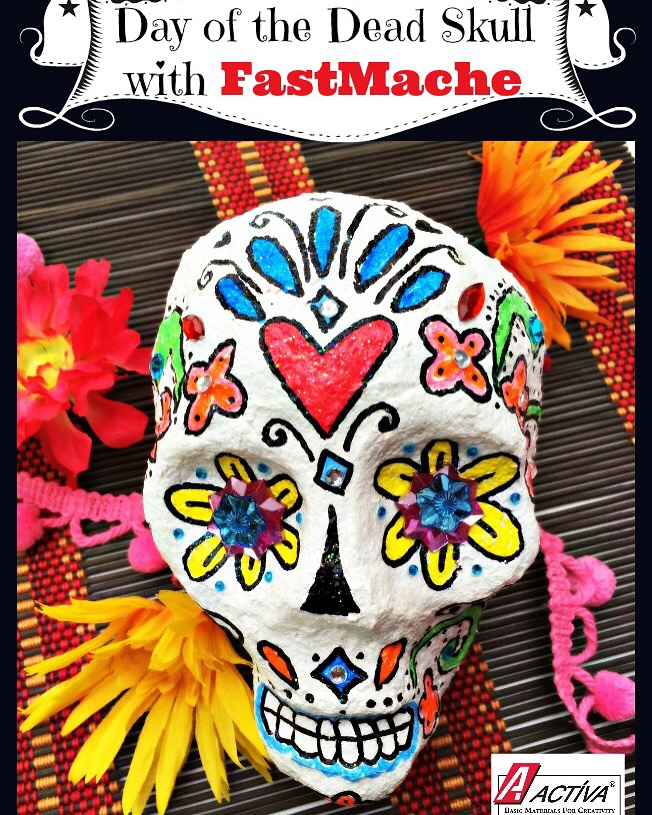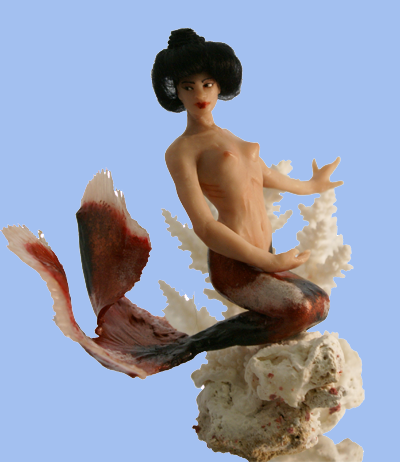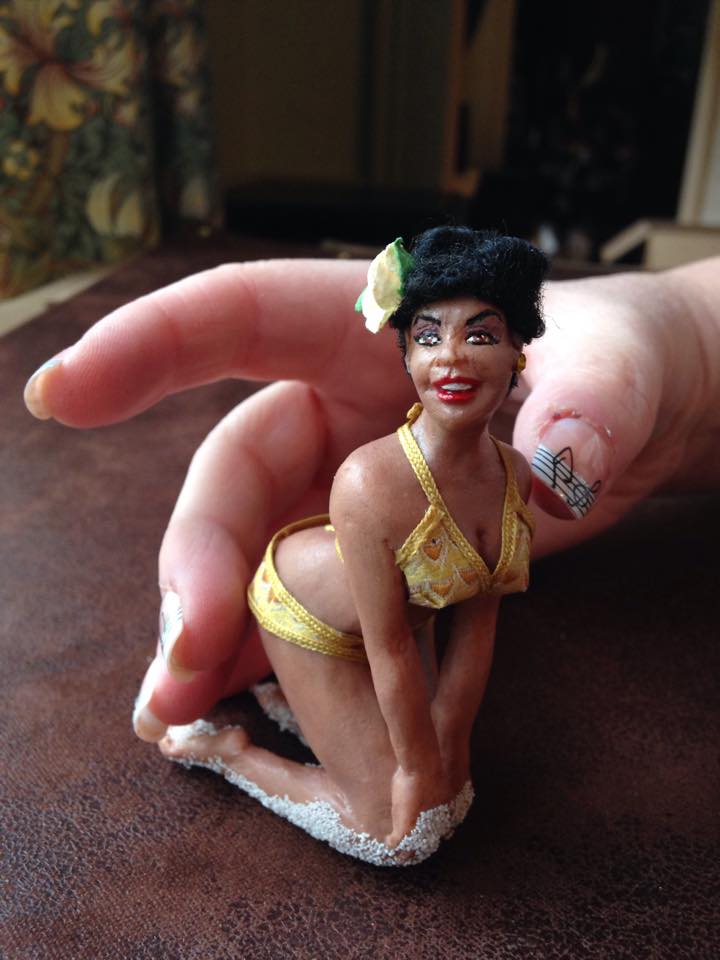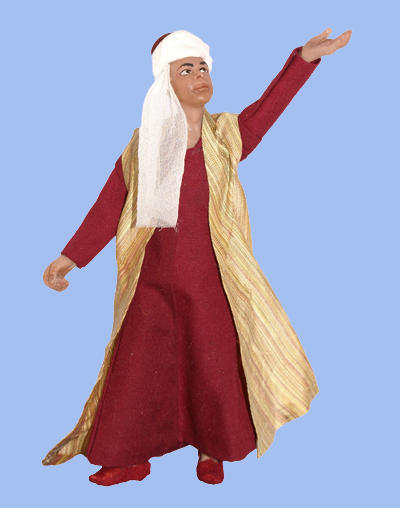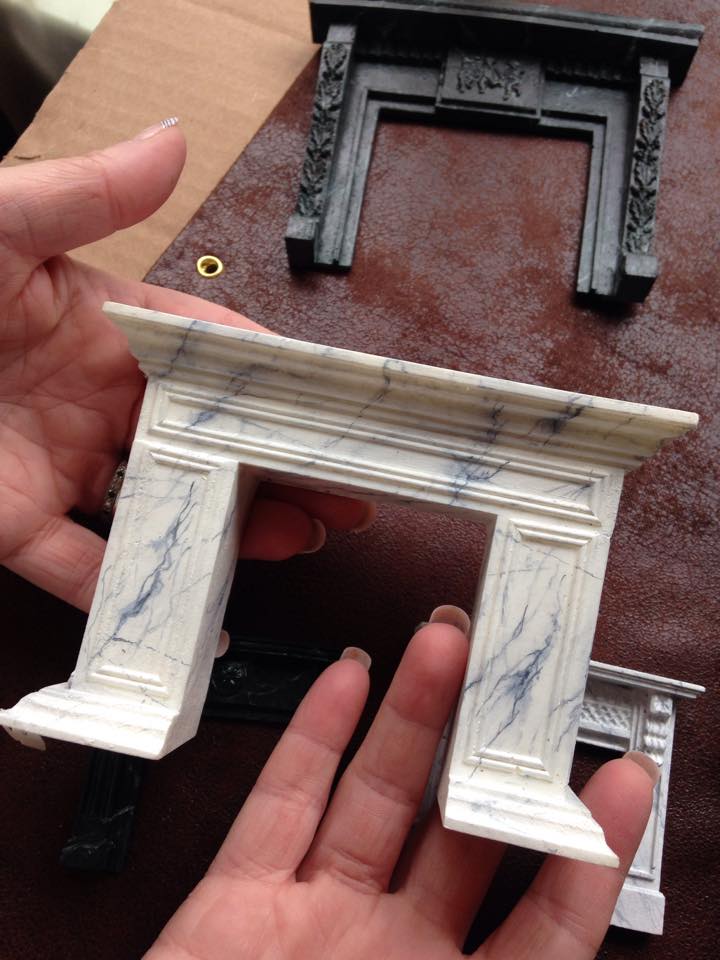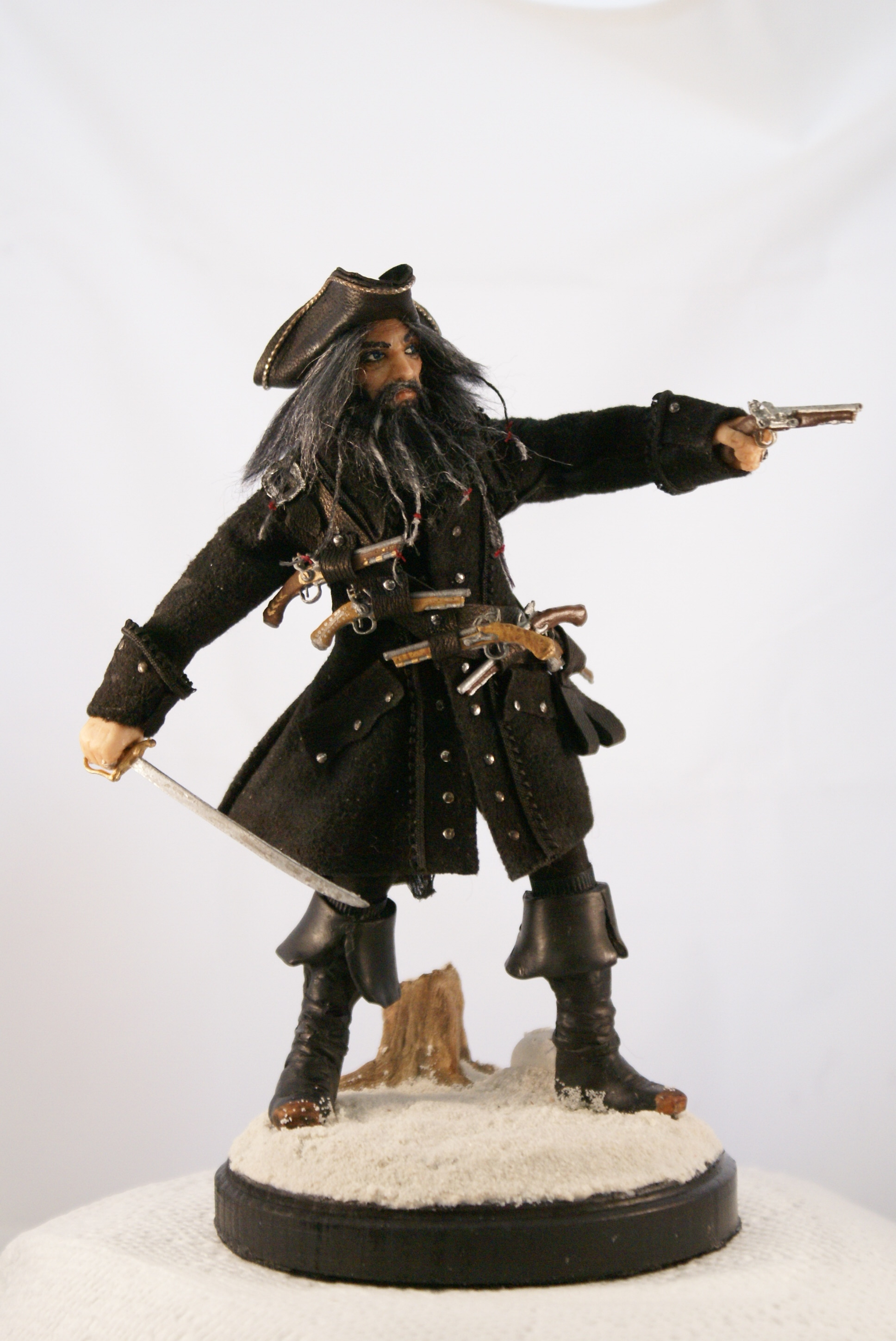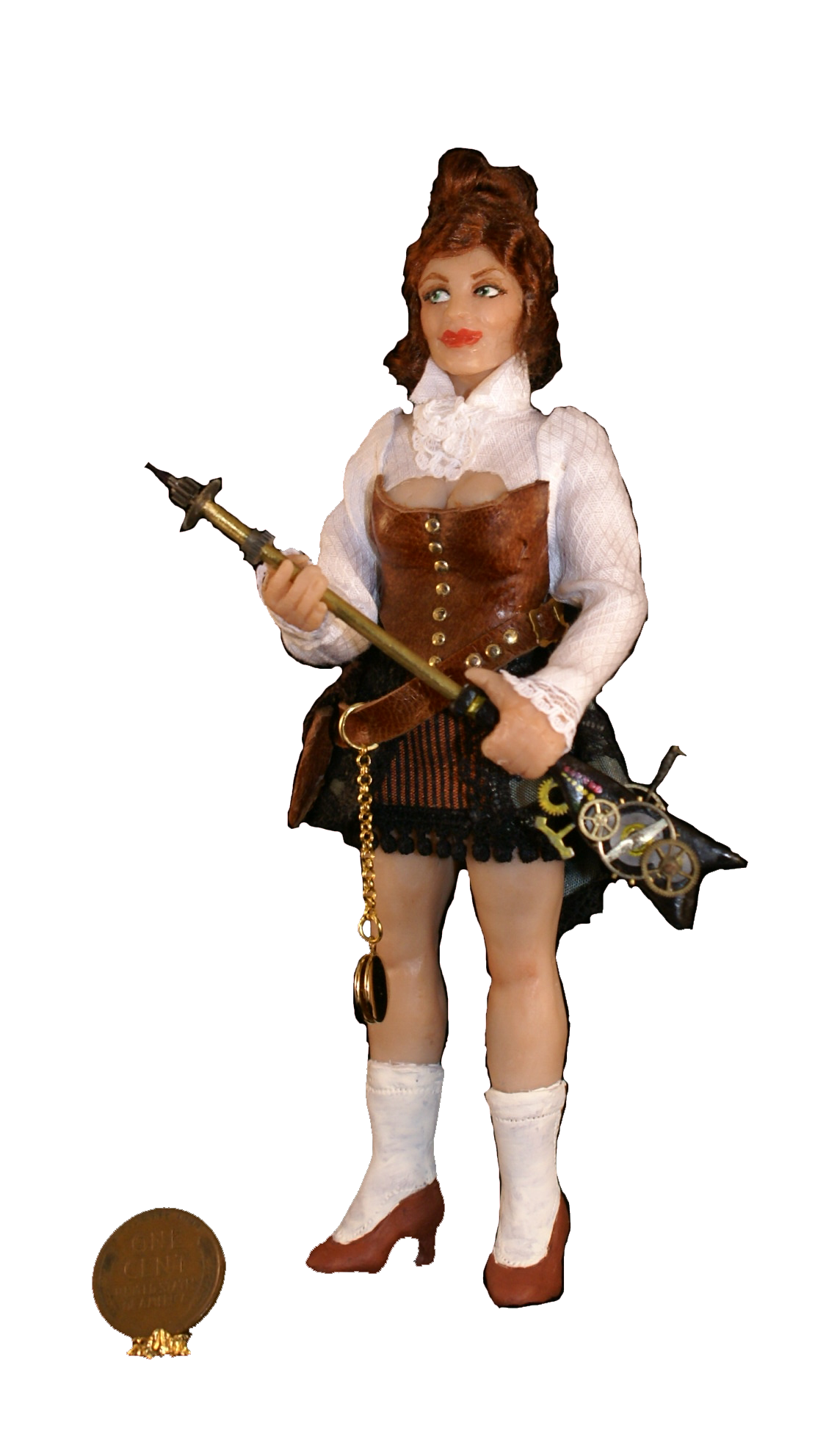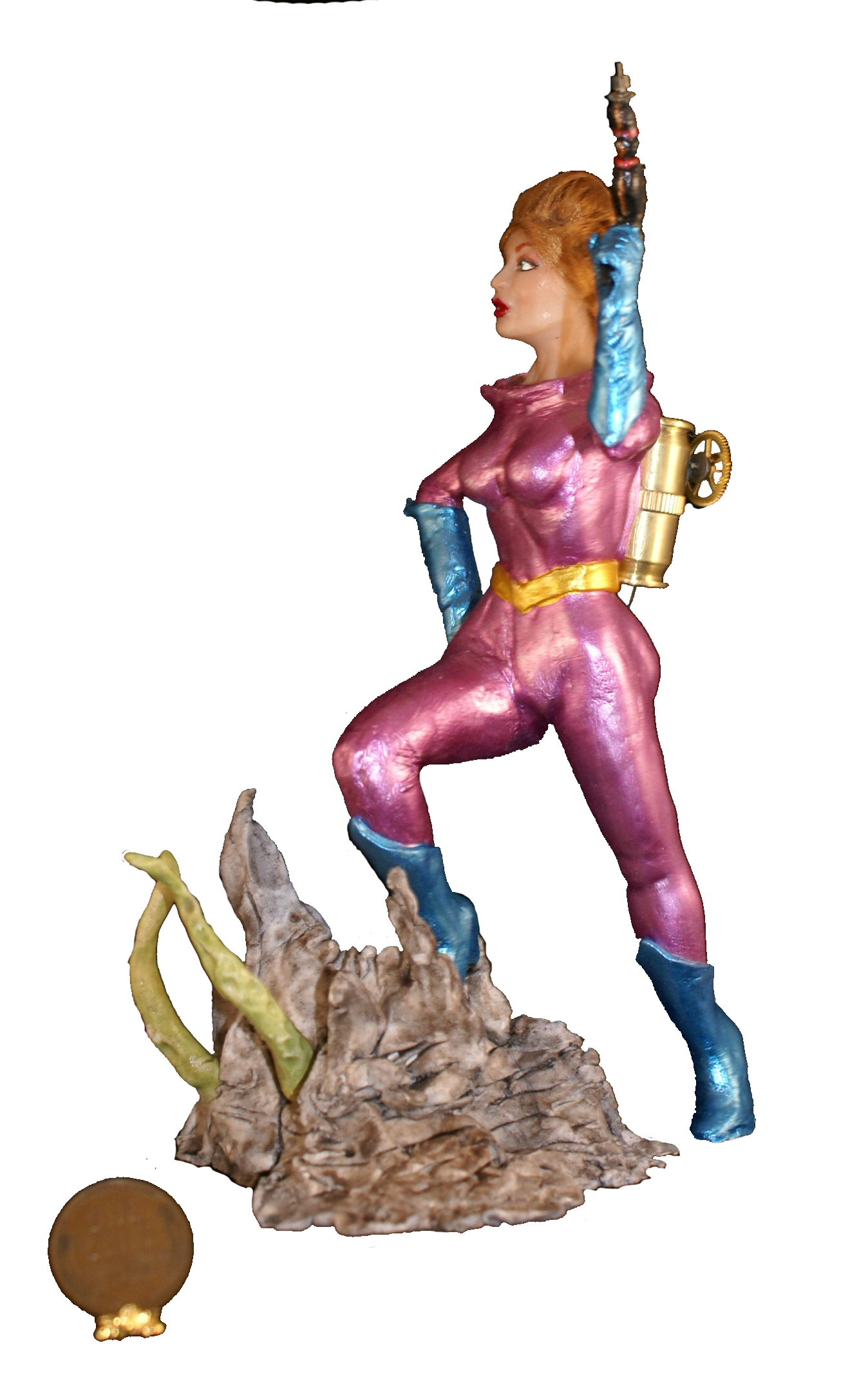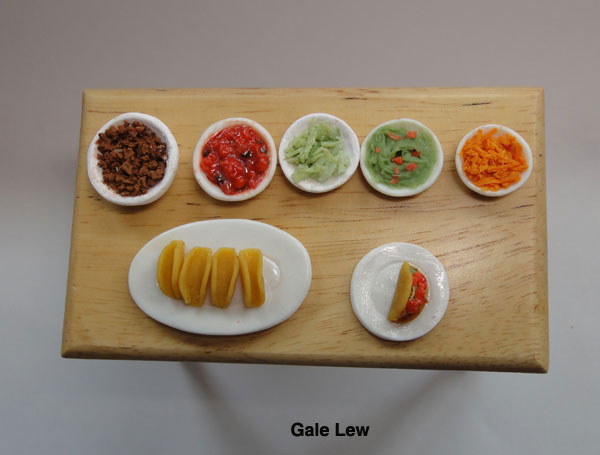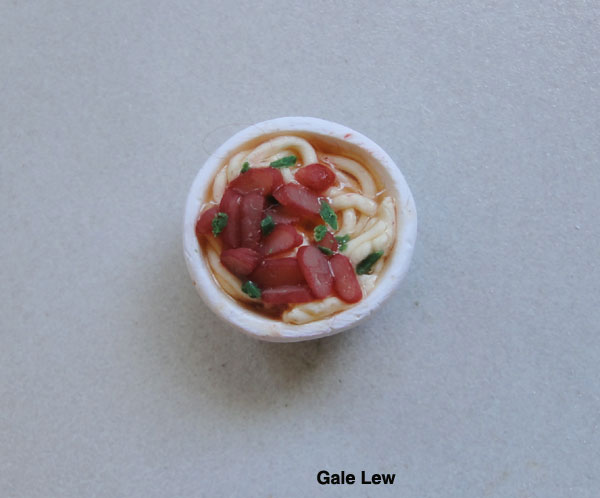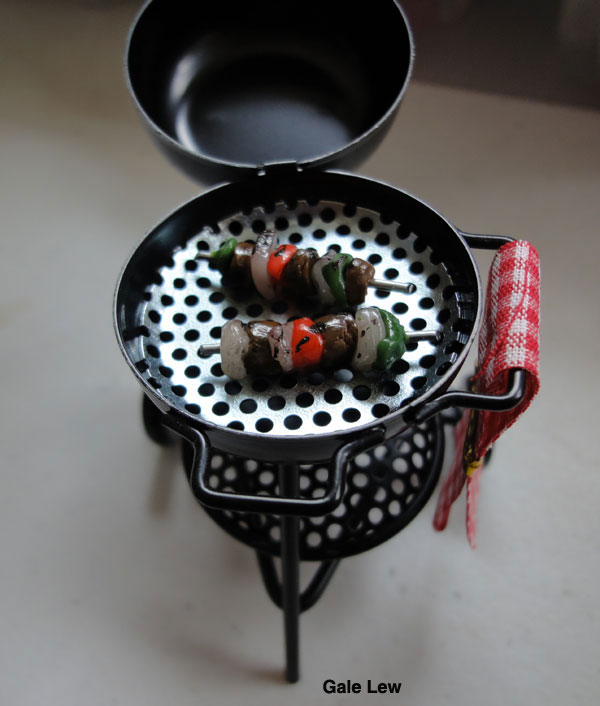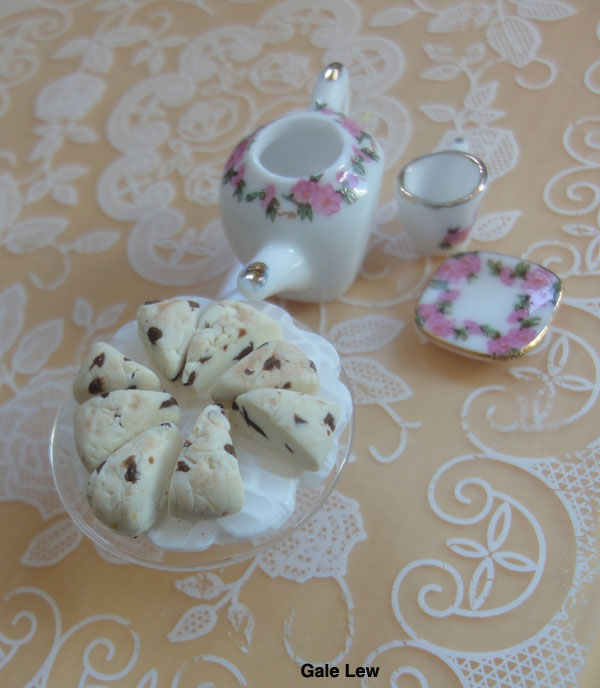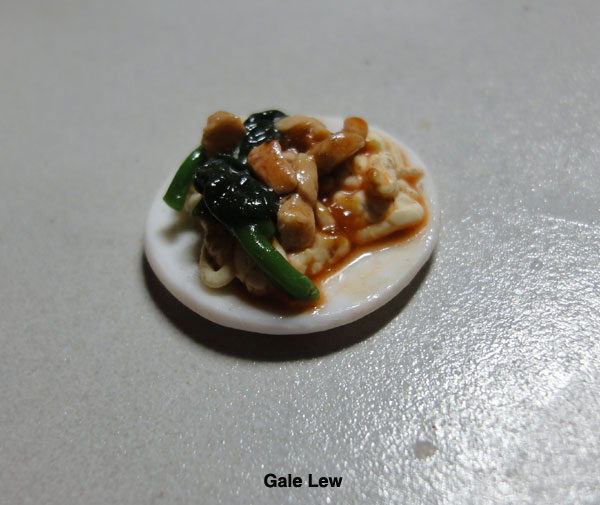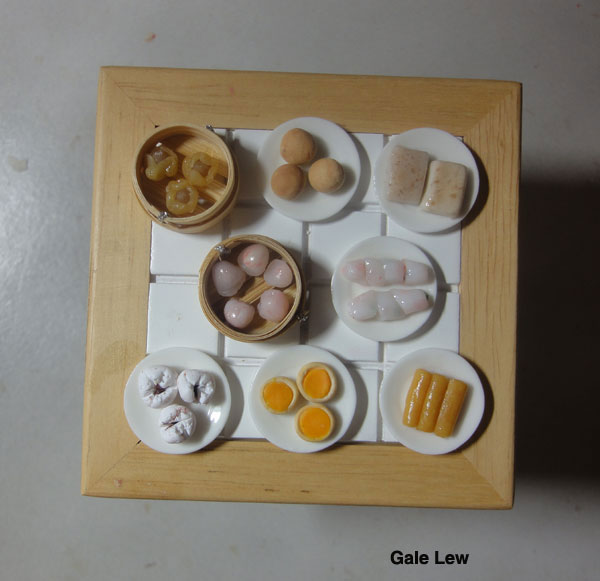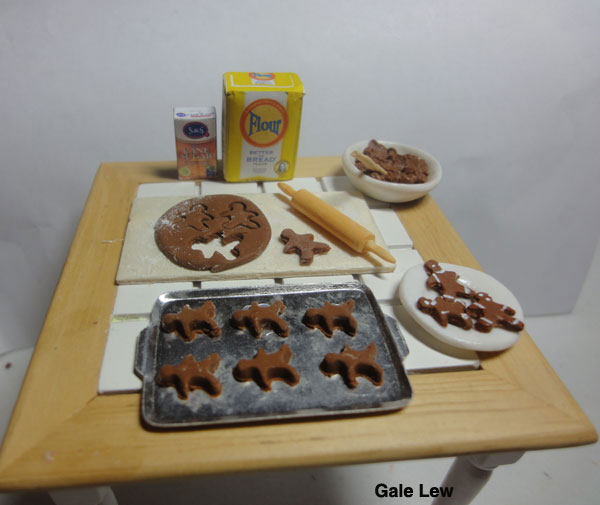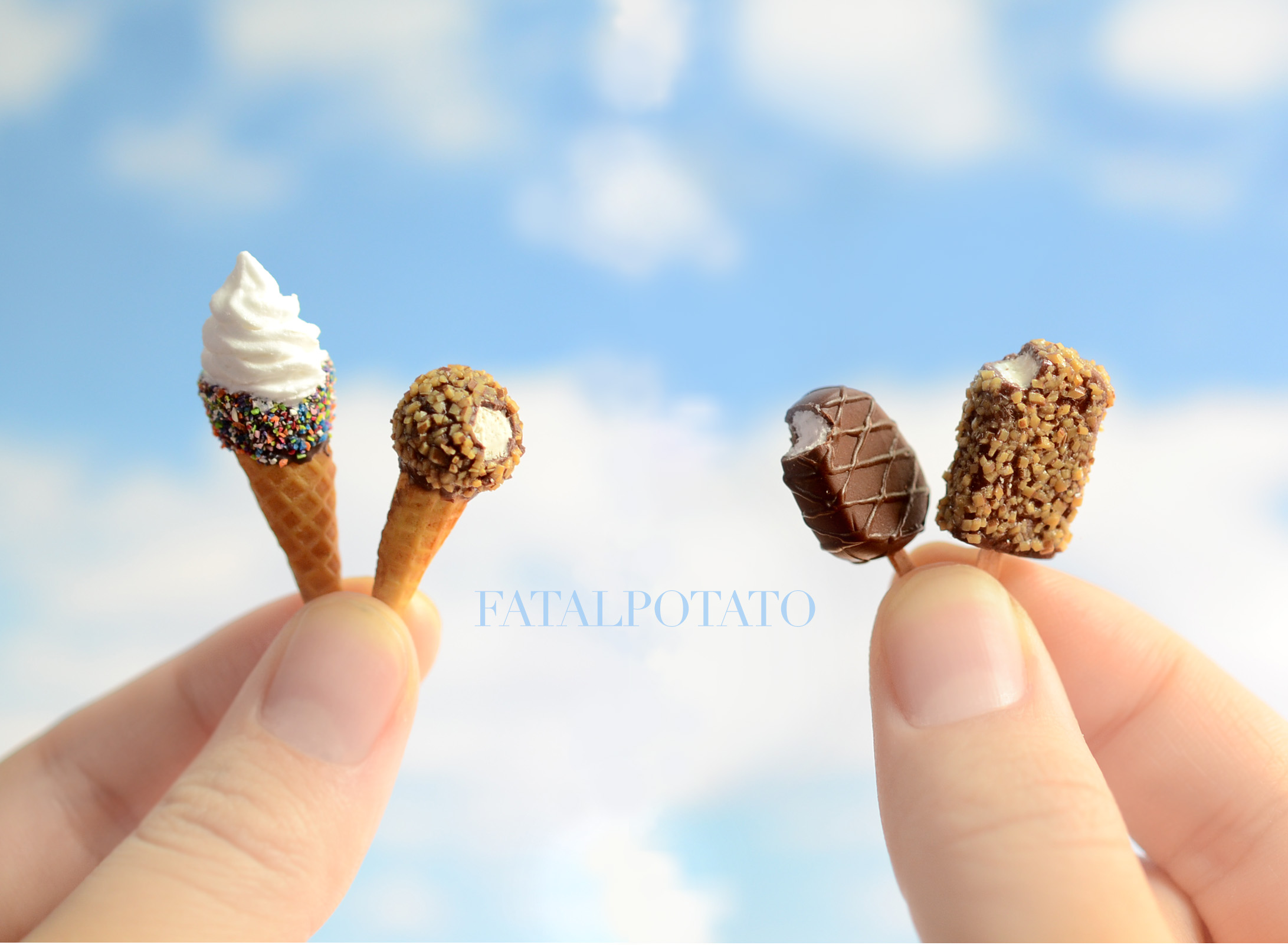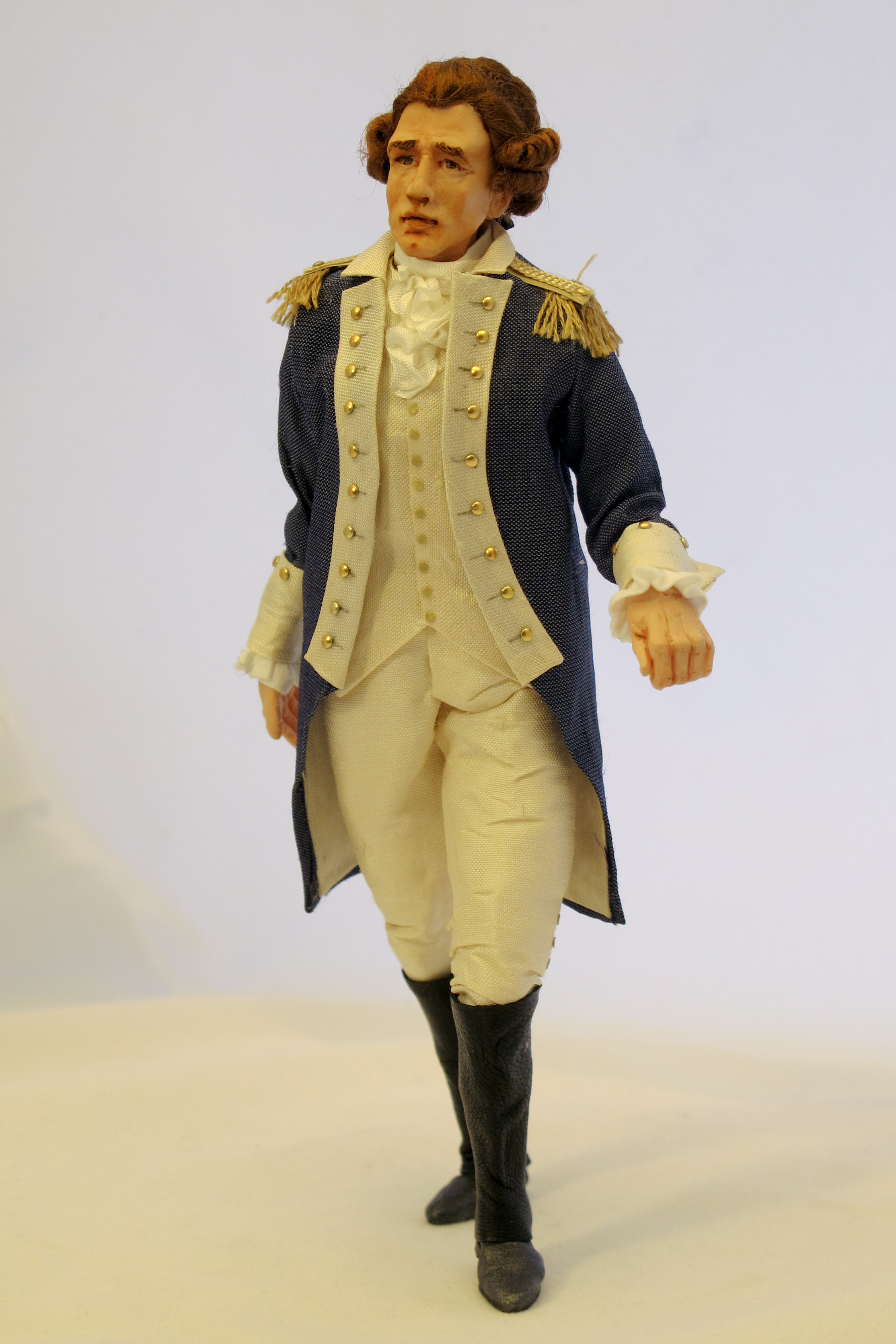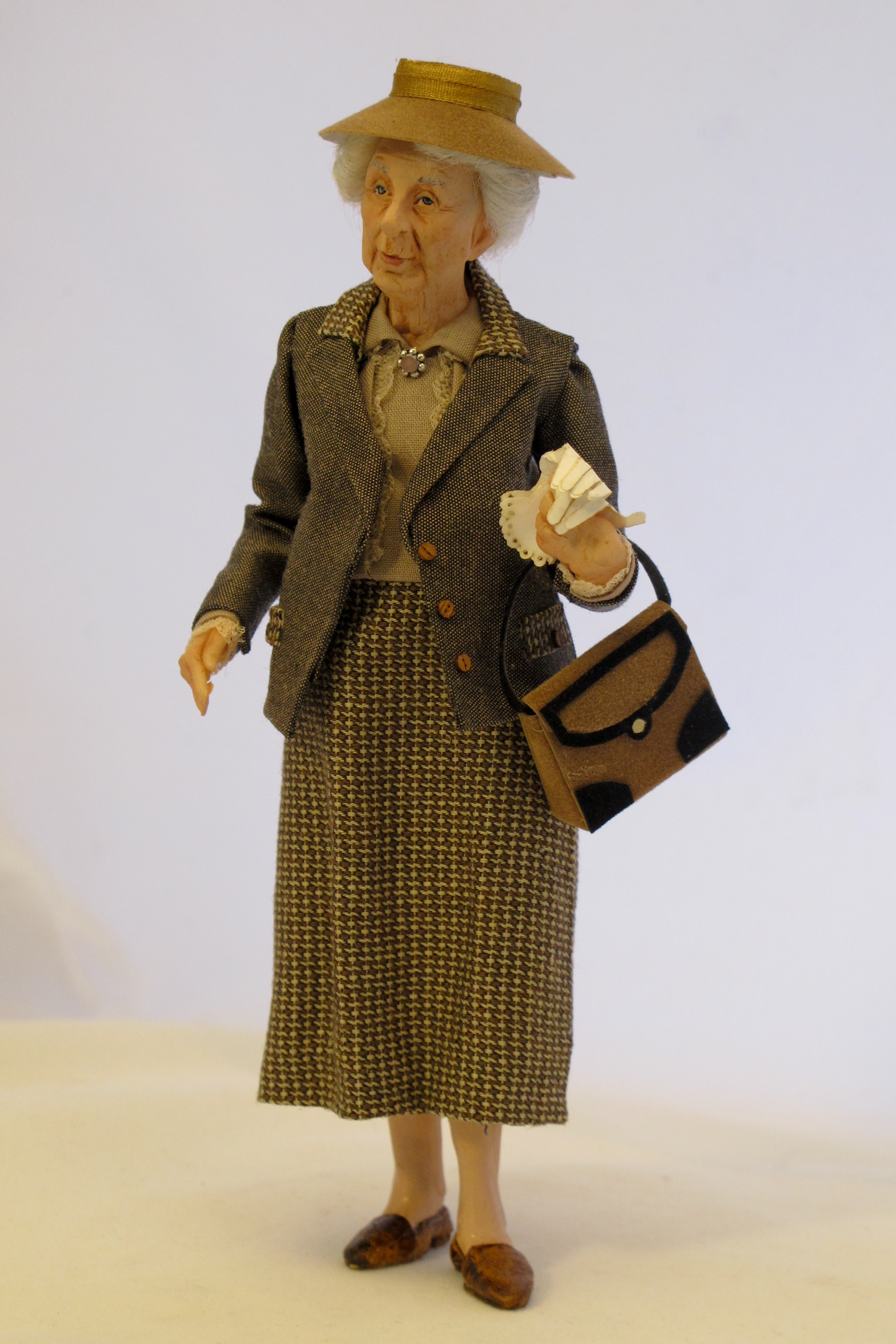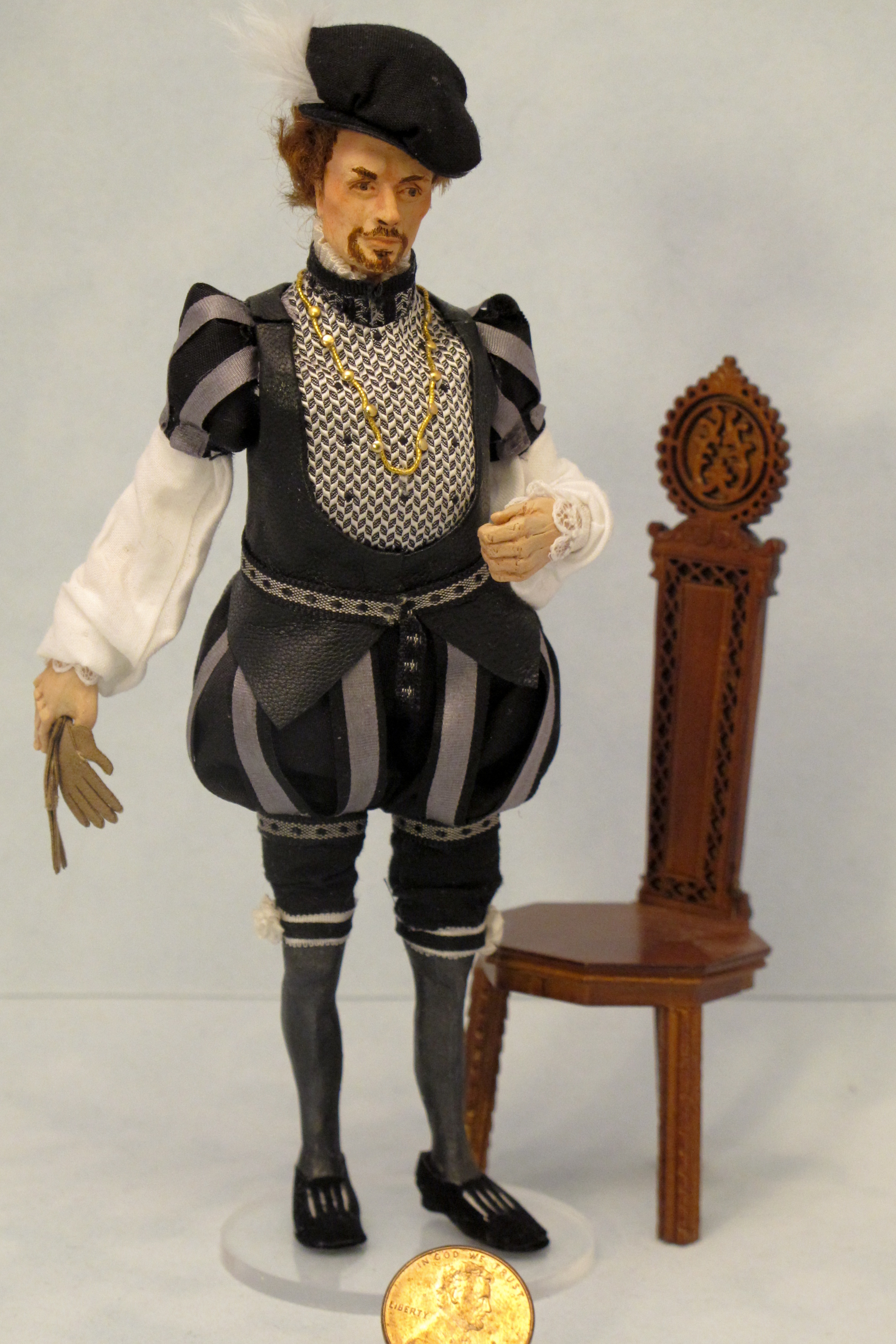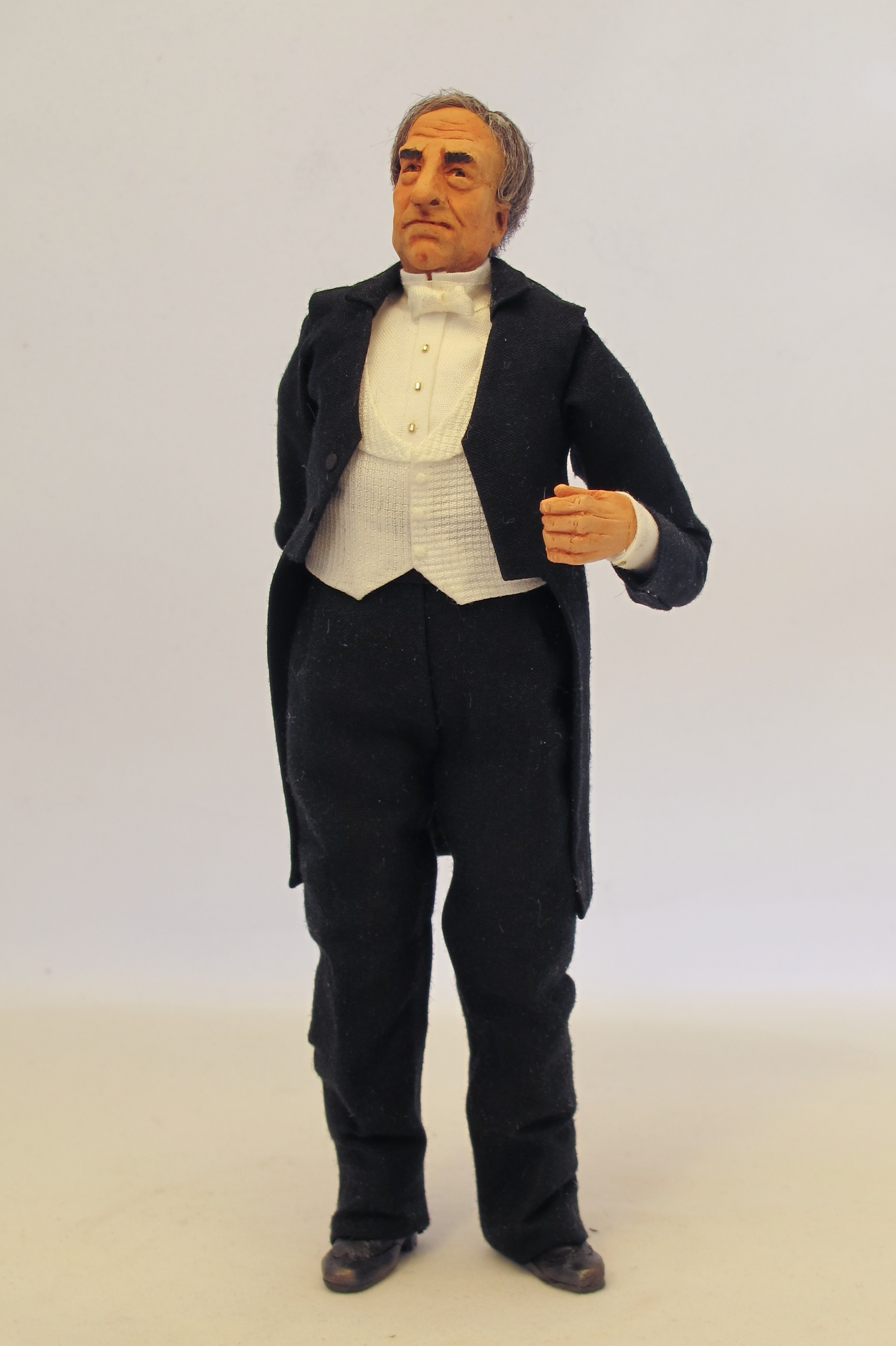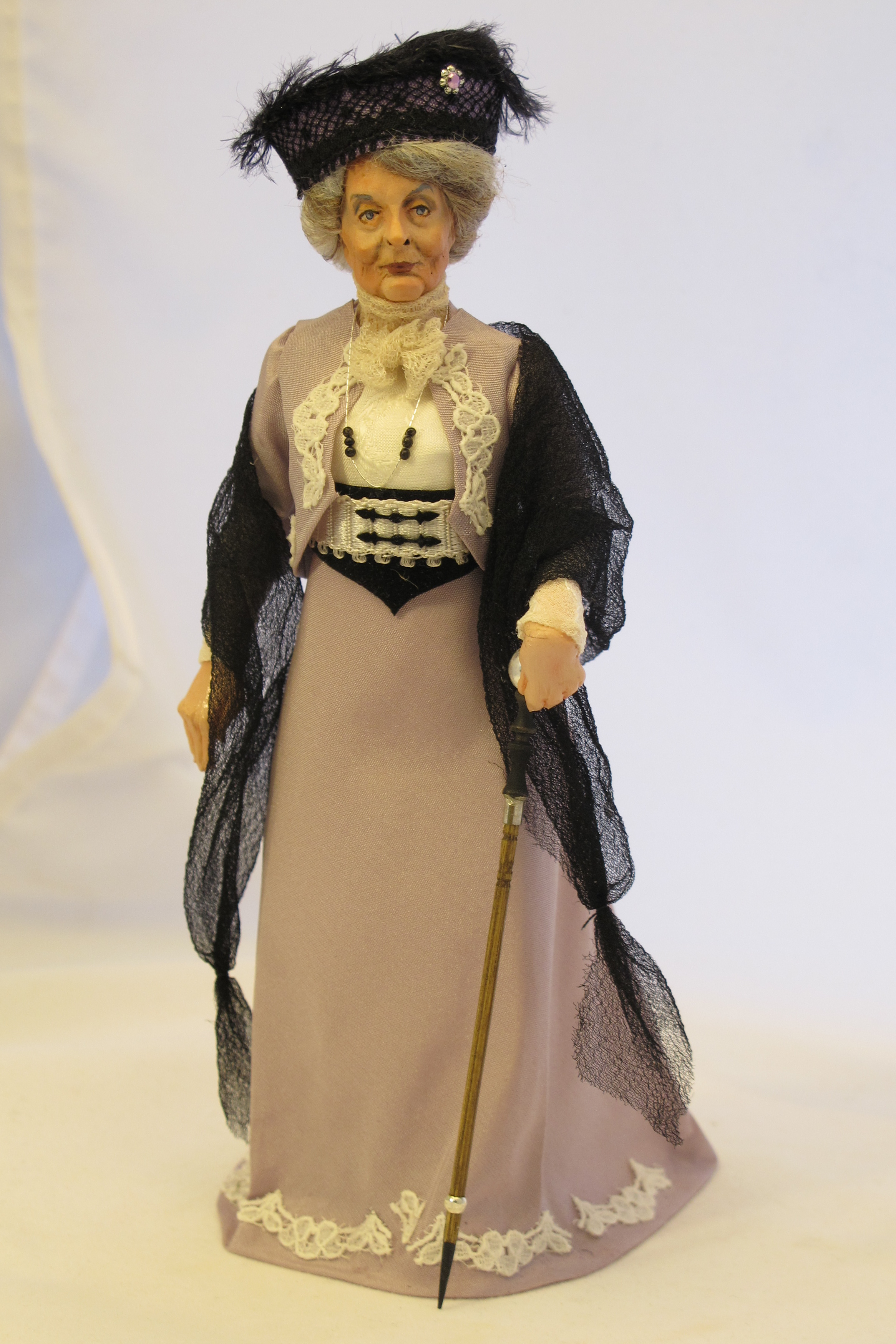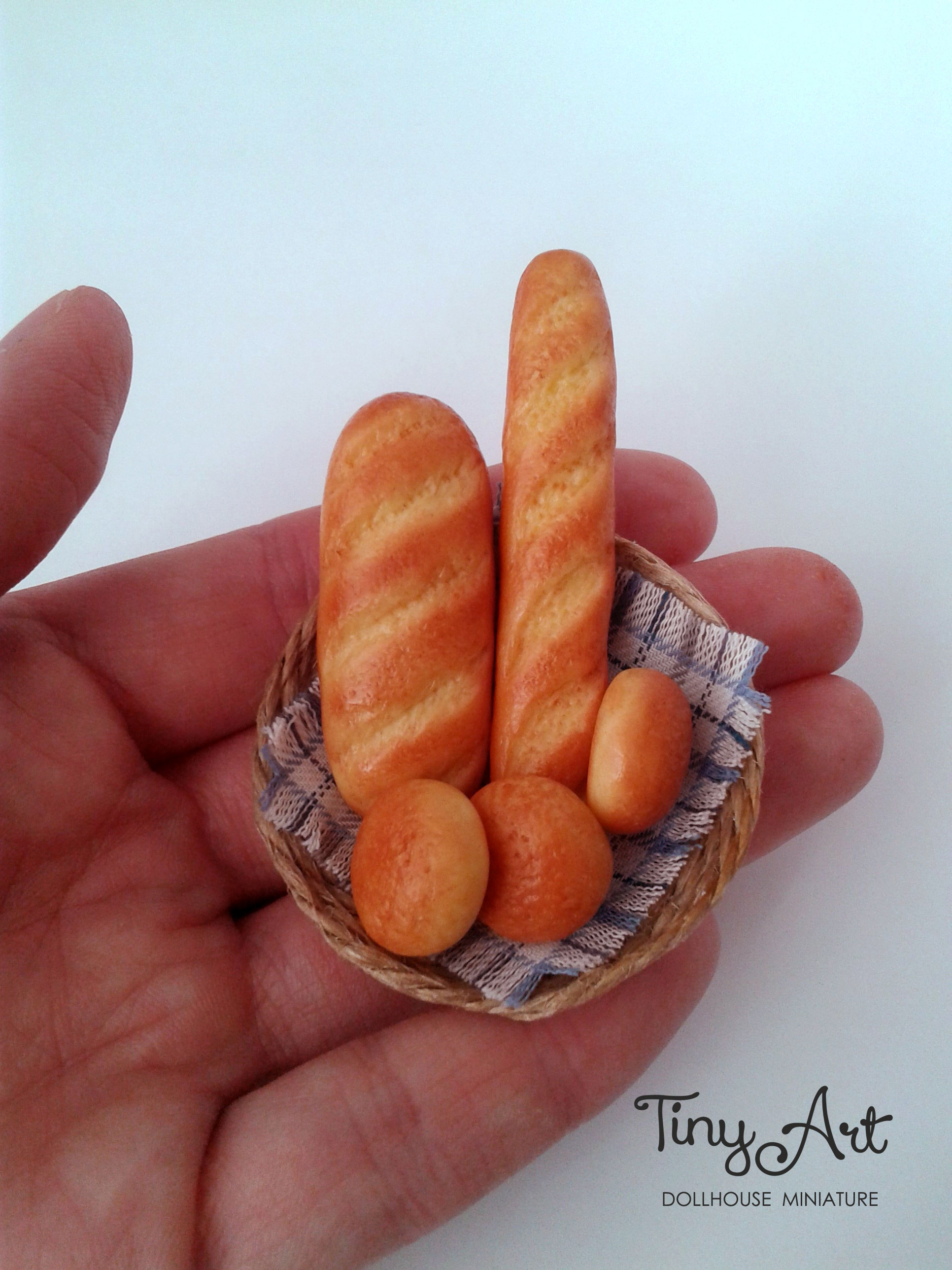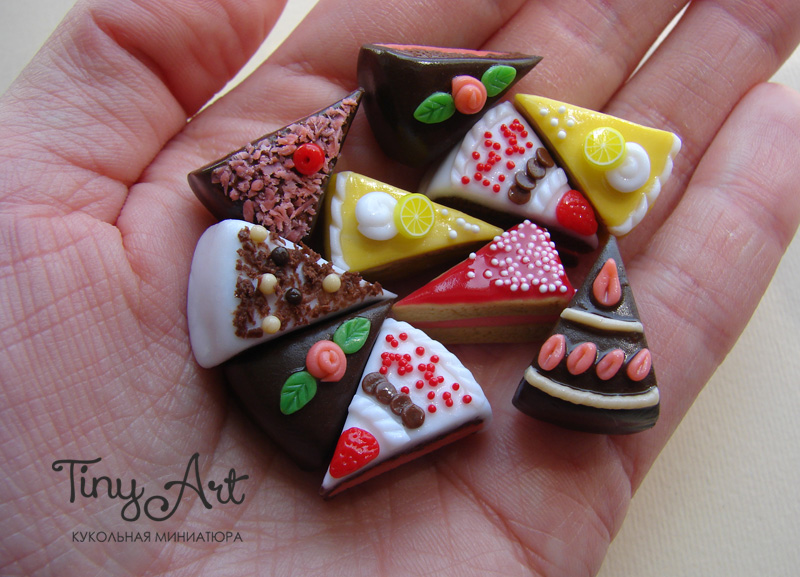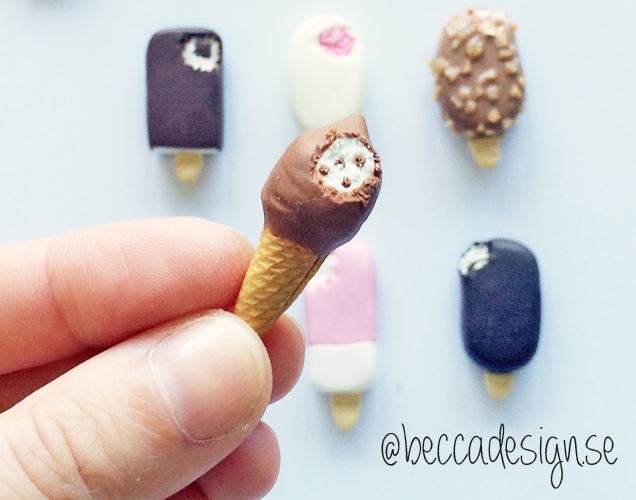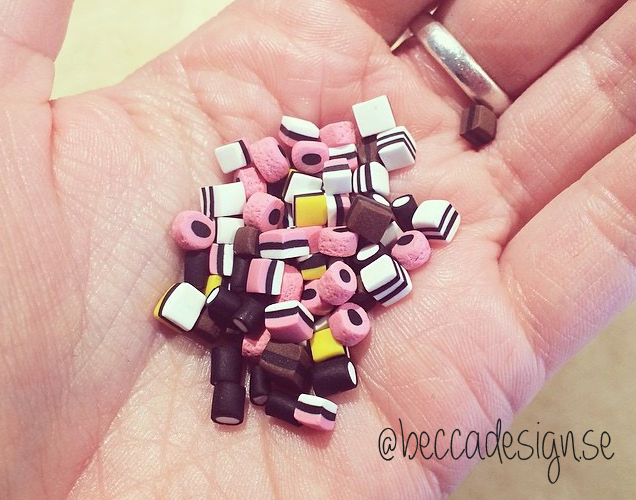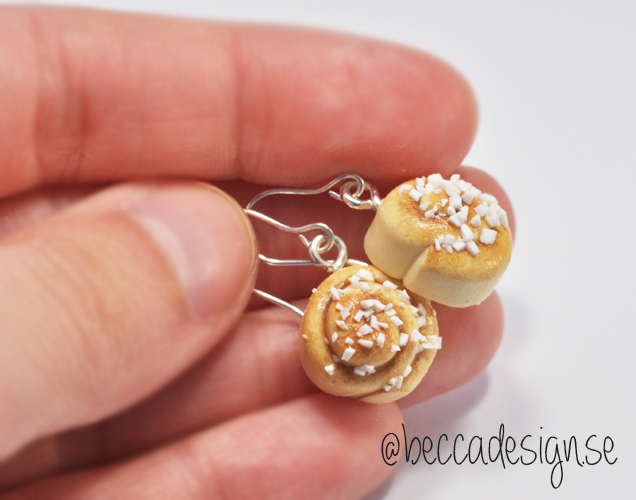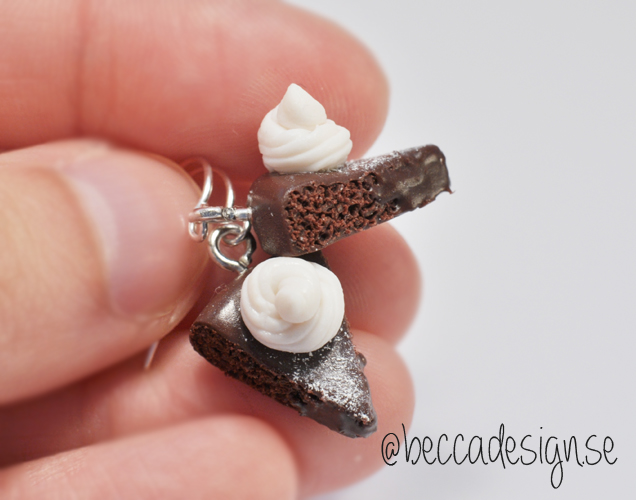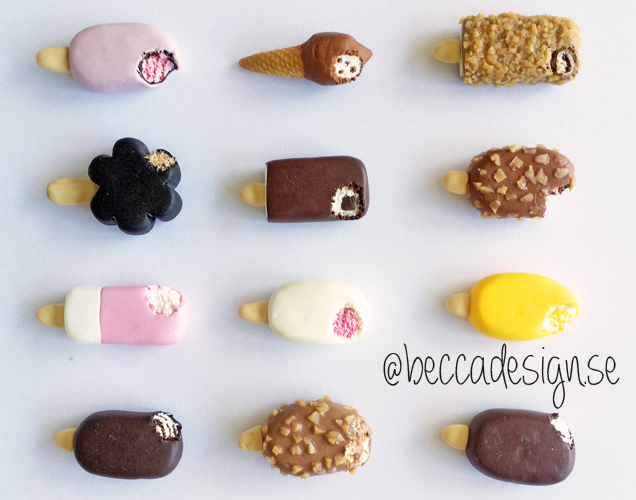Miniatures by Megan Hess
| Instagram | DeviantArt | Facebook |
 What’s your earliest memories with miniatures?
What’s your earliest memories with miniatures?
I think miniatures have always been a part of my life in one way or another. As a very young girl I can remember loving the feeling of holding something small in my hand. One of my earliest memories as a child was catching a teeny, tiny frog and trying to talk my mother into letting me keep it. She wasn’t persuaded.
How did you first get started making miniatures?
That’s an easy question to answer. My interest in anything creative comes from, and was nurtured by, my mother. She was always making something; our kitchen table was never really fit for eating on. Whether it was making dollhouses, or Christmas ornaments or Halloween costumes for my sister and me, the creative process was just a normal part of my childhood.
I was always interested in small things, and I had a whole collection of miniature animals, tea sets, and other knickknacks. However, I didn’t start feeling a need to make miniatures until I came across an article in Dolls House and Miniature Scene about Betsy Niederer. I saw all her wonderful miniature food scenes filled with Christmas and Halloween goodies and I knew immediately I wanted to make miniature food. My only sadness comes from the fact that I lost my mother, Sue, to pancreatic cancer four years ago, and she never really got to see any of the miniature food I made. It was something I’m sure we would have bonded over.
 How has your work with miniatures evolved?
How has your work with miniatures evolved?
I’ve been making miniature polymer clay food for a little over four years now. When I first saw that article about Betsy Niederer, I didn’t even know what her miniatures were made of; I had no idea what polymer clay was. It was, what felt like, a long process doing research and learning as much about the craft as I could through the Internet, magazines and Stephanie Kilgast’s wonderful how-to book. I think the one thing I make that has improved the most since I started has been my cupcakes. For some reason, I just love miniature cupcakes, and I really focused in on trying to make the best one I could. It took me about two years before I was happy with the cupcakes I made, so that was definitely an interesting journey.
Favorite mini you own by another artist.
I really adore the cupcakes I have from Cindy Teh of Snowfern Clover. She is just the most amazing artist and person. I have also been lucky enough to be able to make a miniature wildlife scene under the instruction of Beth Freeman-Kane. I completed a framed kit with a pair of chickadees on a barbed wire fence and I really treasure it. In my humble opinion, Beth Freeman-Kane is the gold standard for miniatures, it just doesn’t get any better for me. If I could figure out how to get my hands on anything made by the incredible Tomo Tanaka of NuNu’s House I would be over the moon, but so far I just have his books, which are invaluable to me.
As far as miniatures and art in general, this may not sound very unique, but I am so inspired by other artists. To see what people have created with their hands and minds really gets me going and in the mood to sit down at my little table in my bedroom and get to work.
To think that when a polymer clay artist begins their work all they have is a hunk of clay and somehow they end up with a beautiful little piece of art is just an amazing thing to me. The process from raw material to finished product is a thing of beauty. In everyday life I’m very inspired by people who face adversity in their lives with dignity and grace. Life can be harsh and unfair a lot of the time, and I always try to remember how incredibly lucky I am to have a wonderful healthy family and a fairly comfortable life when so many people all over the world have such great challenges to face.
What is the most memorable miniature you have ever seen?
I once saw miniature marital aids in an online store (you know what I mean) for the bedroom. It was a little kit complete with fuzzy handcuffs and a riding crop. I laughed so hard, and thought, now I’ve seen everything in miniature!
When I am going through a particularly tough time in my life–and I have had several pretty bad ones–I try really hard to not think life is conspiring against me. I try to remember a quote by one of my favorite authors, Christopher Hitchens, ” To the dumb question ‘Why me?’ the cosmos barely bothers to return the reply: why not?” In other words, don’t take it personally, its just life, and none of us get out of it alive.
Advice for beginner artists and miniaturists?
Wow, this is a tough one. I suppose my reluctance to offer advice may stem from the feeling that I’m still very surprised to receive any attention at all in regards to my miniatures. If I can say anything, it would be to get online. I’m sure not everyone lives in a city where there aren’t any other miniature artists, but I am fairly certain I do. I swear for the first year, I thought it was me and half a dozen artists I read about in magazines. I was fairly certain I had the weirdest hobby next to those people who collect potato chips shaped like the U.S. Presidents’ faces. When I signed up for Facebook and started seeking out other polymer clay miniature artists I was pleasantly surprised to find a whole community of people who shared my interests. I guess it never dawned on me all the people who build dollhouses need to fill their kitchens with something. It was wonderful to find a supportive group of awesome artists ready and willing to offer advice, friendship and exchange ideas and techniques.

The Internet is also a well of information, you really can learn how to do almost anything from YouTube. I would also recommend sculpting what you like, or what you enjoy sculpting. Don’t force things; if you like desserts then sculpt desserts. If you like savory foods, then sculpt them. There’s no need to try to force yourself into making something you’re just not that interested in.
Upcoming projects planned?
I’m currently working on my first roombox scene. It’s the first time I’m trying to put the food I make all together in a cohesive scene and I am finding quite challenging. Making single items is one thing, but trying to put them all together in a collection that’s trying to tell a story or make a bigger picture is a horse of a different color. At the moment all four of my sons, Colton, Logan, Jonathan and Harrison, are all in school which would make one think there is more time for art, but I find it the exact opposite. Between laundry for six people, feeding six people, homework and trying to fit everything I need to without children at my feet in the hours they attend school, there isn’t much time for being creative. Luckily I have an ally in this, my husband David is incredibly supportive and does his best to get the kids out of the house to give me time to turn my brain off of mommy mode and into mini mode.
Anything else you’d like to add?
I would like to thank all the artists I’ve met online who have offered their friendship, advice, and kindness to me. I wouldn’t still be making miniature food if I hadn’t met them. And I wouldn’t be anywhere near as happy with what I’ve created so far without all the knowledge I’ve gained from what they’ve shared with me.
Megan Larayne Hess lives in Pueblo, Colorado. To see more of her amazing miniature food and mini creations, head on over to Instagram, DeviantArt, or Facebook!


